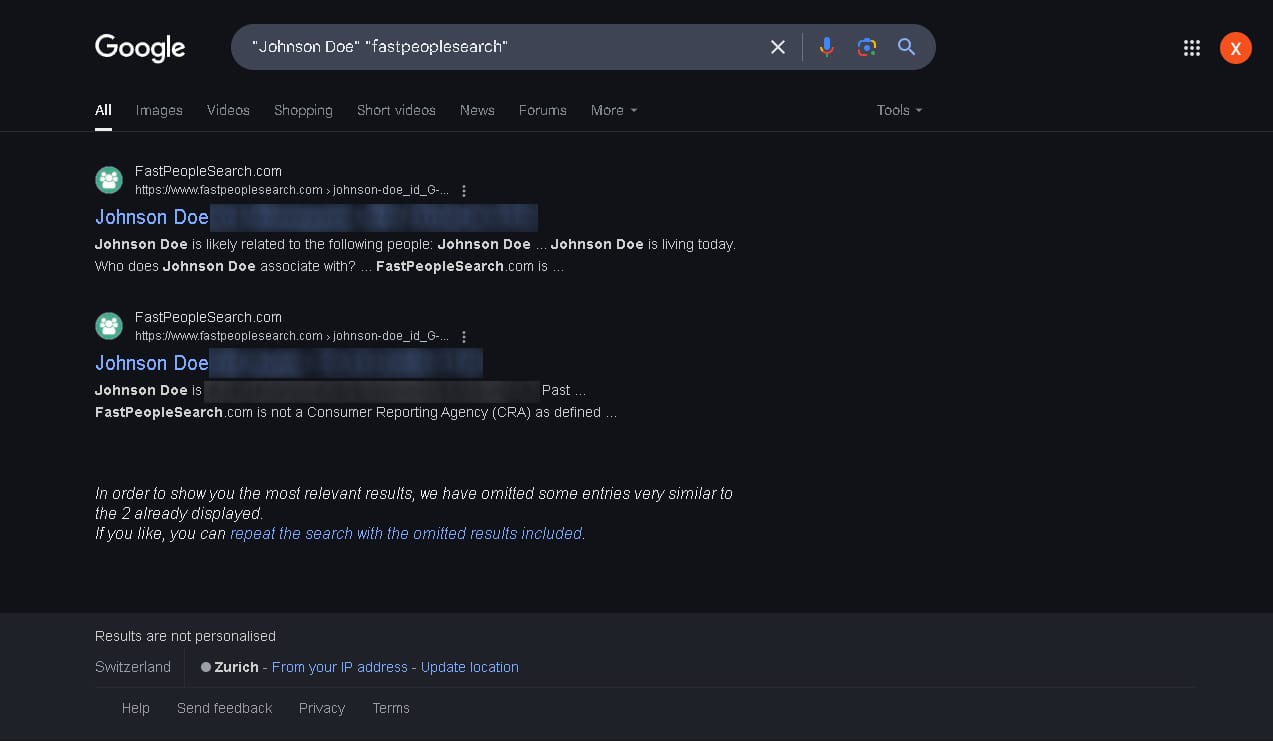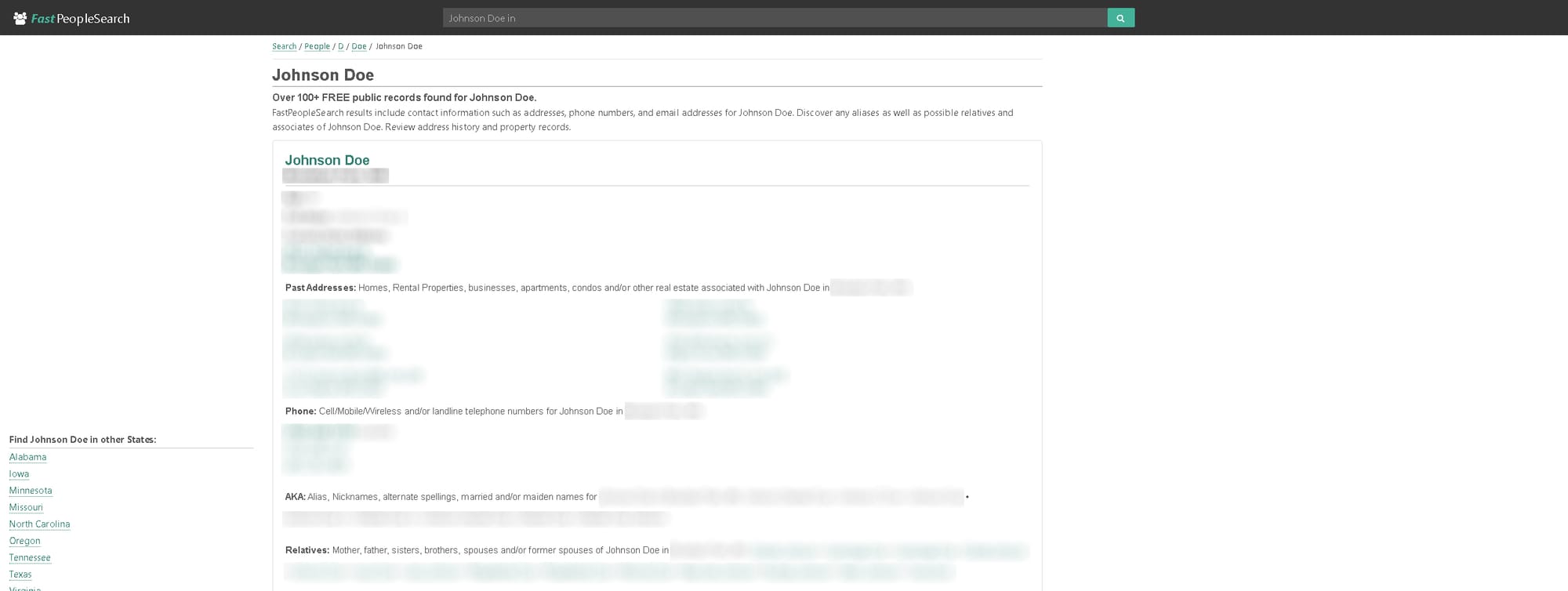Ever done that self-Google search and felt a chill run down your spine? Seeing your full name, address history, phone number, family members – maybe even property value estimates – scattered across websites you never signed up for? It's a worrying experience, and sadly, super common in the US.
While it's infuriating, you're not completely stuck. Getting your info scrubbed takes work, feels like you're dealing with cockroaches sometimes (they keep coming back!), and isn't foolproof. But you can significantly dial down your public exposure. Here’s my playbook for finding your data and clawing back some privacy, tailored for those in the US.
Step 1: Deep Dive - Uncovering Your Footprint

First, you need the lay of the land. How exposed are you? Time to search like the FBI (but for yourself).
- Google Smart:
- Quotes are your friend:
"Jane Marie Doe","Jane M. Doe","Janie Doe". Use every name variation. - Add locations:
"Jane Marie Doe" "Austin, TX","Jane Doe" "Portland, OR". Current and past cities/states. - Search usernames:
"YourGoToUsername".
Pro Tip: Stop using the same username everywhere! If your Discord, X/Twitter, Instagram, and Reddit handle are identical, you're making it dead simple for data brokers (and anyone else) to connect your activities across platforms. Diversify your online identities! - Search email addresses:
"[email protected]". - Search phone numbers:
"555-123-4567".
- Quotes are your friend:
- Check Beyond Google: Try DuckDuckGo, Bing, etc. They might catch things Google misses.
- Social Media Audit: Review your own privacy settings (Facebook, Insta, LinkedIn, X, TikTok – lock 'em down!). Then search for yourself on these platforms to see what's public.
Step 2: Meet the Data Brokers - America's Information Bazaar

You'll quickly find "people search" sites. These are Data Brokers, and the US is their prime hunting ground. They vacuum up data from:
- Public Records: Voter rolls, property deeds, court filings, professional licenses – tons of this is easily accessible in the US.
- Commercial Data: Purchase histories, loyalty cards, surveys.
- Online Tracking: Cookies, apps selling your location (read those permissions), social media scraping.
- Other Brokers: They buy and sell data constantly. It's a huge industry built on your info.
They sell this data to marketers, background screeners, landlords, or anyone curious enough to pay.
Step 3: The Manual Opt-Out Grind
Found your info? Good. Start the list: Site name, URL to your profile. Now, the removal tango begins, one site at a time.
- Look for the Privacy Links: Head to the website footer. You're looking for links like:
- "Do Not Sell or Share My Personal Information"
- "Privacy Choices" / "Your Privacy Choices"
- "Opt Out"
- "CA Privacy Rights" / "Your California Privacy Rights"
- State Laws Are Growing: While there's no single federal law like GDPR, more states are passing their own privacy laws. California (CCPA/CPRA) led the way, but now Virginia (VCDPA), Colorado (CPA), Connecticut (CTDPA), Utah (UCPA), Texas (TDPSA), Oregon (OCPA), Montana (MTCDPA), Iowa (ICDPA), Delaware (DPDPA), New Jersey (NJDPA), New Hampshire (NHPA), and others have comprehensive laws granting residents rights like opting out of data sale/sharing or requesting deletion. Even if you don't live in one of these states, many companies apply these opt-out mechanisms nationwide, especially the "Do Not Sell/Share" ones driven by California's law. Citing these laws (especially CCPA/CPRA) can sometimes add weight to your request.
- Follow Their Process: It usually involves finding your listing, filling forms, maybe email verification, CAPTCHAs. Standard annoyance.
- No Opt-Out Form? Time for Plan B: Some shadier or older sites might not have an easy online form. If you can't find one:
- Look for a Contact Us / Privacy Policy Page: Find a general contact email or even a phone number.
- Email Them: Send a clear, firm email (see template below).
- Call Them (If You Must): Calling can be faster sometimes but leaves less of a paper trail. Be polite but firm. State you want your information removed/opted-out from sale/sharing. Get a reference number or confirmation if possible. Email is usually better for documentation.
Opt-Out Email Template (Adapt as Needed):
Subject: Data Removal Request / Opt-Out of Sale/Sharing - [Your Full Name]
To Whom It May Concern,
My name is [Your Full Name]. I am writing to request the removal of my personal information from your website/database and to opt-out of the sale or sharing of my personal information pursuant to my rights under applicable data privacy laws, including [Relevant State Privacy Law].
My information appears on your website here: [Link to Your Profile URL]
Please process my opt-out request and remove/suppress my profile(s) associated with the following identifying information:
Full Name: [Your Full Name]
Address(es) Listed: [Address(es) Found on Their Site]
Phone Number(s) Listed: [Phone Number(s) Found on Their Site]
Email Address(es) Listed: [Email(s) Found on Their Site]
[Other Key Identifiers Found]
Please confirm once this request has been completed and my information has been removed from public view and opted-out from sale/sharing according to your policies and applicable law.
Thank you for your prompt attention to this matter.
Sincerely,
[Your Full Name] [Your Contact Email Address] [Your Phone Number - Optional] [Your State of Residence - Optional]
- Patience & Persistence: Removal takes time. Follow up if you don't hear back or see changes after a few weeks.
- Suppression Still Rules: Remember, they usually hide, not delete. Your info might reappear later. Periodic checks are necessary.
- Keep Records: Log dates, save emails/confirmations.
Common Data Brokers / People Search Sites (Very Prevalent in the US):
- Whitepages, BeenVerified, Intelius, MyLife, Spokeo, Radaris, PeopleFinder (ran by Intelius), PeekYou, TruthFinder, Instant Checkmate, Nuwber, ClustrMaps, CheckPeople... the list goes lengthy.
Step 4: PimEyes - Your Face is the Search Term

PimEyes uses facial recognition to find where photos of your face appear online. You can upload a photo (or search using one found online) and see results from blogs, news sites, forums, public social media, etc. They have their own process for requesting removal of specific indexed images containing your face, which usually involves verifying you are the person in the photo.
Step 5: Third-Party Removal Services

Manual opt-outs across hundreds of US brokers can feel like a full-time job. Removal services automate this.
- How They Work: You pay a subscription, give them your info, and they send out opt-out requests to a long list of brokers on your behalf and often monitor for reappearances.
- Options: EasyOptOuts.com, DeleteMe, Incogni, Kanary, Optery, HelloPrivacy, Privacy Bee. (Compare costs, features, and which brokers they cover before choosing).
- Pros: Massive time saver, broader coverage, ongoing monitoring.
- Cons: Cost, requires trusting them with your data, not 100% foolproof (can't remove everything).
For many in the broker-heavy US market, these services are worth considering. I highly recommend EasyOptOuts as they are cheap and effective.
Step 6: Playing Defense - Prevention & Other Clean-Up
Stop feeding the brokers.
- Unique Usernames/Info: Seriously, stop using the same username, and maybe even slight variations of your name or email, across multiple platforms if you value privacy. Compartmentalize your digital life.
- Social Media Lockdown: Max out privacy settings everywhere. Think before you post personal details.
- Google Privacy Checkup: Review your Google activity (myactivity.google.com). Pause/delete data collection you dislike. Adjust ad settings.
- Check for Breaches: Use HaveIBeenPwned.com. Change compromised passwords! Breach data = broker fuel.
- Be Stingy Online: Does that random website really need your real birthdate or phone number? Question data requests.
Recommended Sources:
Closing Statement
Fighting for online privacy in the US is an uphill climb against a massive data industry and patchy laws. It requires vigilance. Focus on finding your info, using opt-out tools (like CCPA/CPRA's "Do Not Sell/Share"), leveraging removal services if needed, and crucially, limiting how much new data you put out there. You won't become a ghost, but you can significantly reduce your public profile and make it harder for your personal life to be bought and sold. Start chipping away. Every removal counts.
